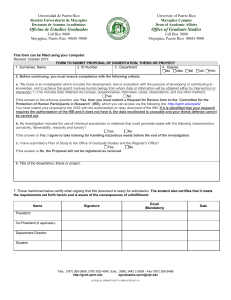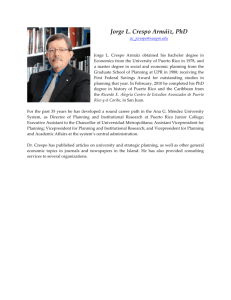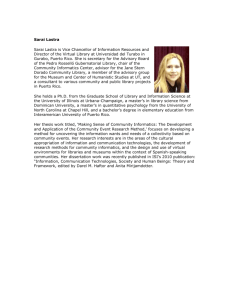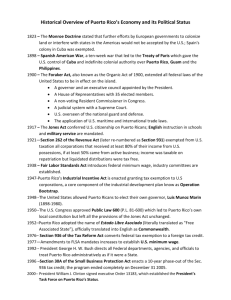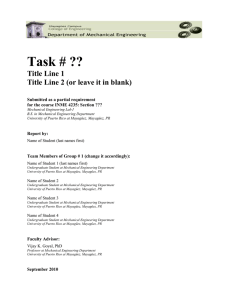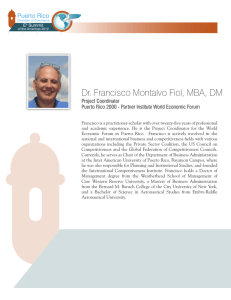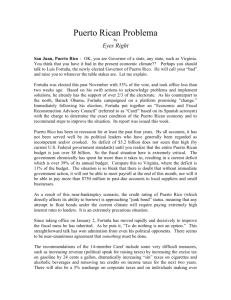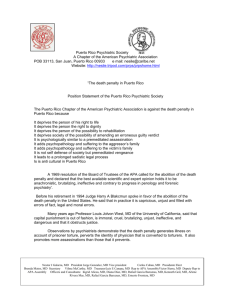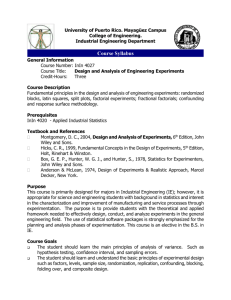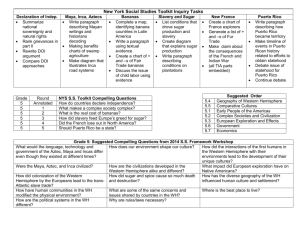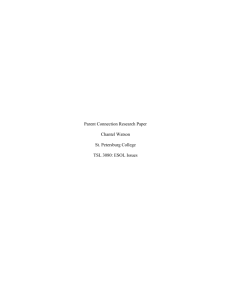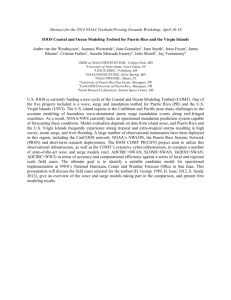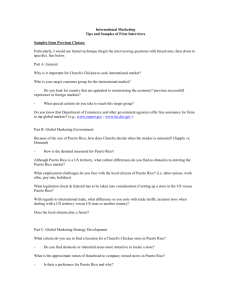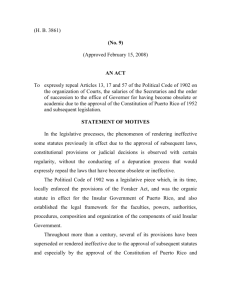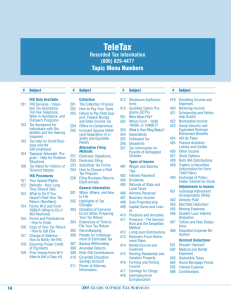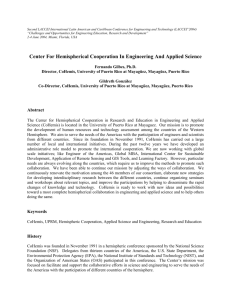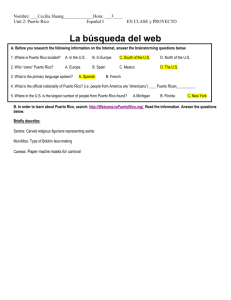Advanced Technology for Water Monitoring in the Puerto Rico Water
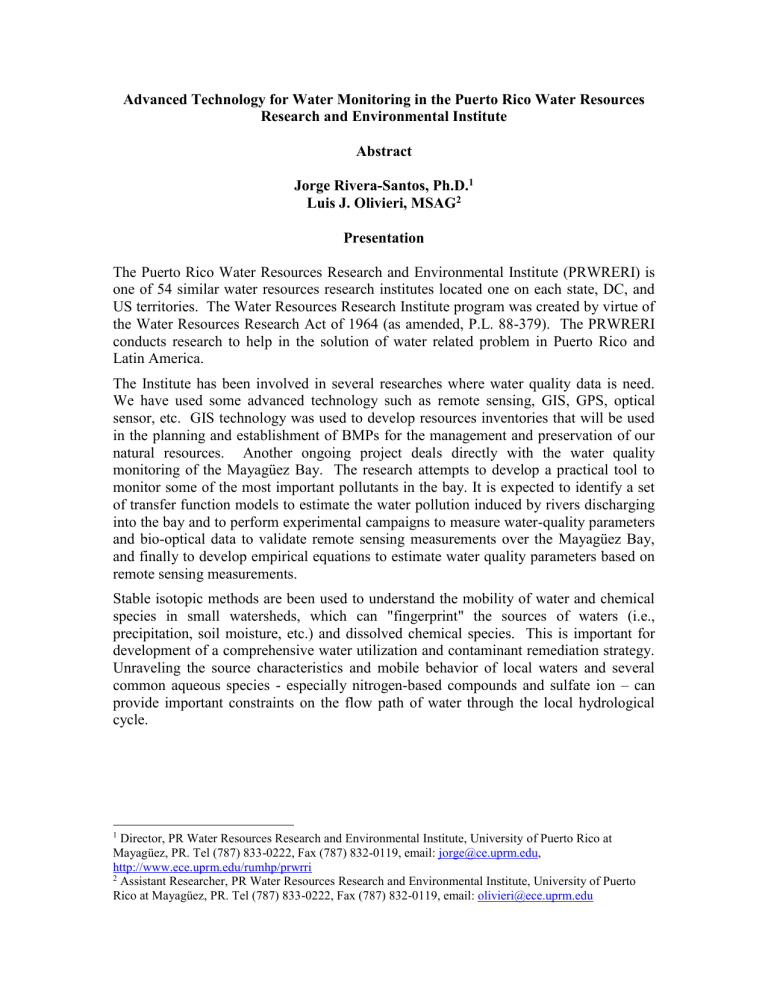
Advanced Technology for Water Monitoring in the Puerto Rico Water Resources
Research and Environmental Institute
Abstract
Jorge Rivera-Santos, Ph.D.
1
Luis J. Olivieri, MSAG 2
Presentation
The Puerto Rico Water Resources Research and Environmental Institute (PRWRERI) is one of 54 similar water resources research institutes located one on each state, DC, and
US territories. The Water Resources Research Institute program was created by virtue of the Water Resources Research Act of 1964 (as amended, P.L. 88-379). The PRWRERI conducts research to help in the solution of water related problem in Puerto Rico and
Latin America.
The Institute has been involved in several researches where water quality data is need.
We have used some advanced technology such as remote sensing, GIS, GPS, optical sensor, etc. GIS technology was used to develop resources inventories that will be used in the planning and establishment of BMPs for the management and preservation of our natural resources. Another ongoing project deals directly with the water quality monitoring of the Mayagüez Bay. The research attempts to develop a practical tool to monitor some of the most important pollutants in the bay. It is expected to identify a set of transfer function models to estimate the water pollution induced by rivers discharging into the bay and to perform experimental campaigns to measure water-quality parameters and bio-optical data to validate remote sensing measurements over the Mayagüez Bay, and finally to develop empirical equations to estimate water quality parameters based on remote sensing measurements.
Stable isotopic methods are been used to understand the mobility of water and chemical species in small watersheds, which can "fingerprint" the sources of waters (i.e., precipitation, soil moisture, etc.) and dissolved chemical species. This is important for development of a comprehensive water utilization and contaminant remediation strategy.
Unraveling the source characteristics and mobile behavior of local waters and several common aqueous species - especially nitrogen-based compounds and sulfate ion – can provide important constraints on the flow path of water through the local hydrological cycle.
1 Director, PR Water Resources Research and Environmental Institute, University of Puerto Rico at
Mayagüez, PR. Tel (787) 833-0222, Fax (787) 832-0119, email: jorge@ce.uprm.edu
, http://www.ece.uprm.edu/rumhp/prwrri
2 Assistant Researcher, PR Water Resources Research and Environmental Institute, University of Puerto
Rico at Mayagüez, PR. Tel (787) 833-0222, Fax (787) 832-0119, email: olivieri@ece.uprm.edu
